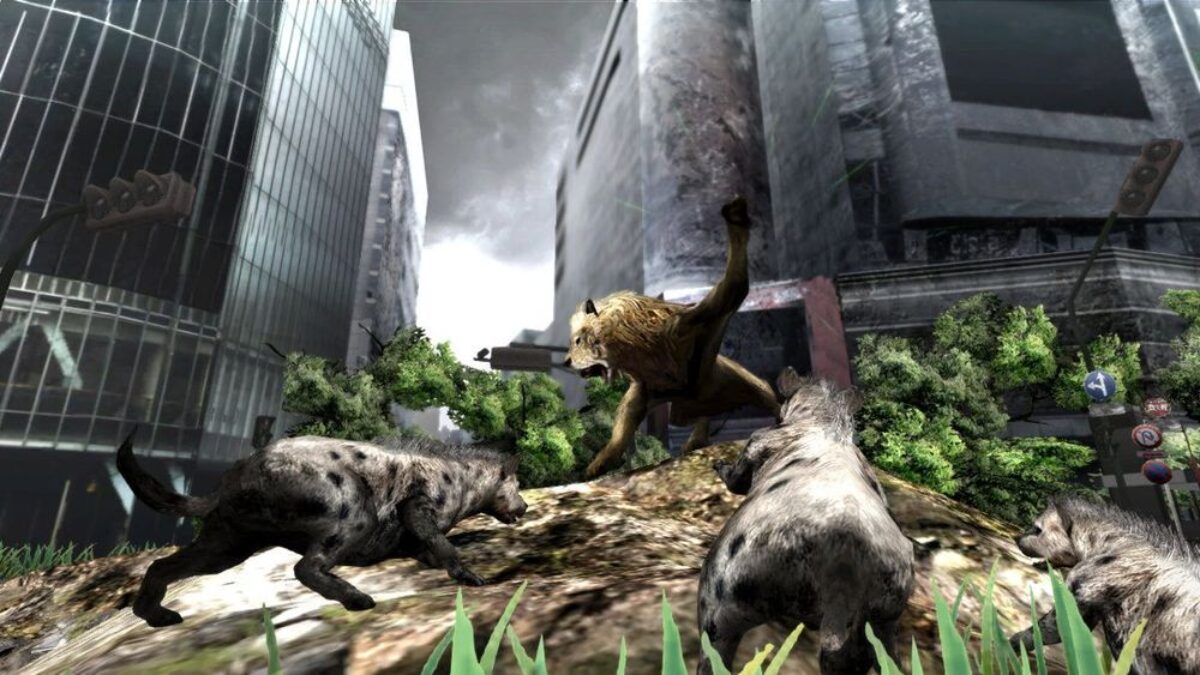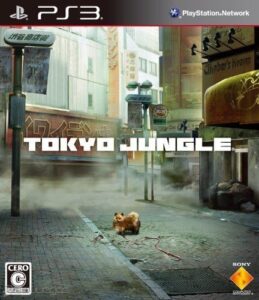 Tokyo Jungle was born as an atypical project that was originally thought to end up as a curiosity available only in Japan. The first impressions received by Western journalists who had tried it in Japan were not good, since they left the gameplay aside to talk about how surreal the game was. For this reason, there were initially doubts about its possible arrival in other markets.
Tokyo Jungle was born as an atypical project that was originally thought to end up as a curiosity available only in Japan. The first impressions received by Western journalists who had tried it in Japan were not good, since they left the gameplay aside to talk about how surreal the game was. For this reason, there were initially doubts about its possible arrival in other markets.
However, in the end Sony decided and it was even localized into different languages. And although its distribution was purely digital, the game ended up being one of those chosen titles in the compilation pack Best of PlayStation Network Vol. 1.
Surviving in the jungle
Tokyo Jungle is divided into two main modes to pay attention to. On the one hand we have the survival mode and on the other the story mode. Although it would be usual to imagine that the story mode would be the nerve center of Tokyo Jungle, in reality is the opposite. The story mode only unlocks small missions in which we are introduced to specific situations where certain animals gain prominence, but it is not a way to really advance under a consolidated plot. If we want to know what has happened in the world that Tokyo Jungle presents to us, we will have to find information files scattered throughout the different scenarios of the game.
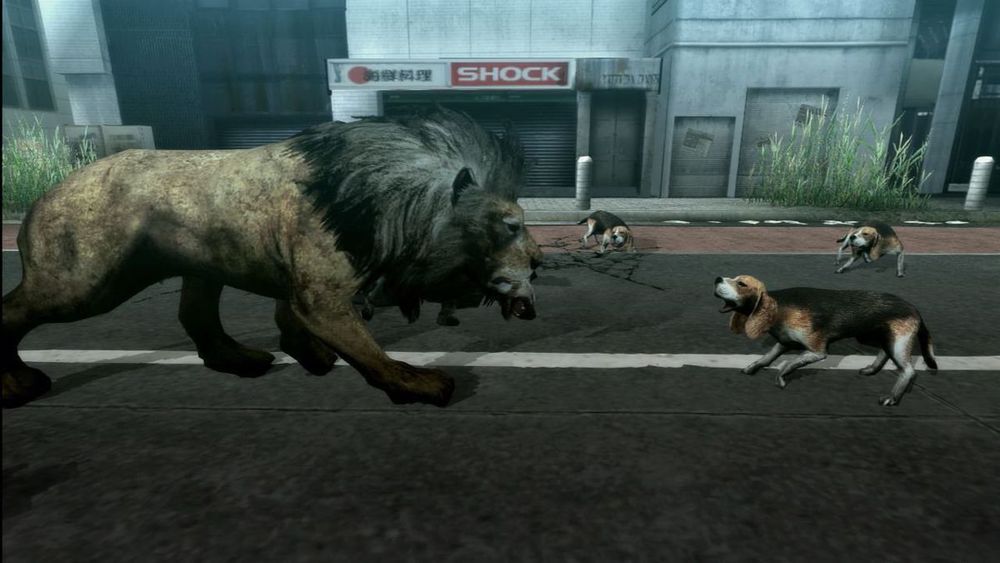
The survival mode is where we will enter again and again to play constantly. The mechanics are very arcade-like, since we play, finish and return to continue playing, either with the same animal or with a different one. The philosophy gains points when taking into account that the world of Tokyo Jungle does not always progress in the same way. In each game in which we enter the animals we find are different, as well as the arrangement of items and extras. Only the design of the stages remains the same, which is undoubtedly a very positive point in terms of offering interest to play again and again.
We start the game with a Pomeranian dog, but step by step we have the opportunity to unlock more animals. We will achieve this by completing the missions that are entrusted to us with each animal that we are controlling. That is, when we have the cat we can unlock the rabbit and when we have the rabbit we can unlock the cow, for example. Once we unlock a new animal we will have to buy it using the survival points that we have obtained playing. The amounts of points required are high, so it will be important to repeat and repeat the survival mode until we have them all. Some even have different versions depending on the color. And the variety of animals is enormous, from the wildest of the jungle, such as a lion or a panther, to a simple chick that becomes a hen when it passes generation. Also, although hidden, there are dinosaurs and humans that appear as DLC.
We can play in local co-op without split screen, taking into account the type of animal we are controlling. We must know if our animal is carnivorous or herbivorous, which will greatly change the game experience. Mammals will have to eat the other animals they find to fill their hunger bar, while herbivores will depend on plants. Both elements, both animals and plants, are indicated on the minimap that accompanies us throughout the game. This is combined with a general map that we can look at by opening the game menu at any time and where the amount of “food” there is in each area of Tokyo is indicated. Eating other animals or plants will allow us to rise in category in our species, which will give us access to having higher quality partners when we enter the mating phase. If we do not reach an adequate rank, the only partner that will come close to us will be one with fleas that will not allow us to have an adequate number of offspring, also including other defects for the progress of the generations.
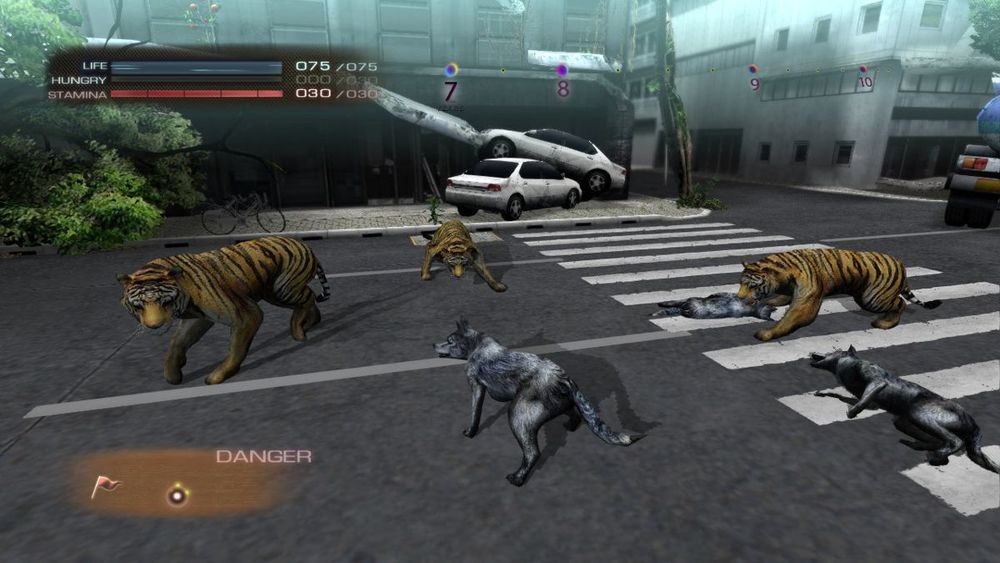
Our path in Tokyo Jungle is based on continued survival. We start as babies, we eat and grow as the years go by, we reproduce and change generations before, if we succeed, we die. Each time we procreate we will have more animals, which will allow us to resist for more years. It is not easy, since we must survive hunger, predator attacks and viruses that will occasionally hit areas of the stage. To help us we will have different items that we will find, both consumables and customization elements. In addition, as we advance we will get each generation to have better skills. This will lead us to become increasingly stronger and more resistant, making it possible for even an apparently very weak animal to defeat, by surprise, the most fearsome predators in the stage. All while we complete challenges, missions and challenges that appear dynamically.
As for the controls, everything is easy to learn. We move, jump, walk silently, eat and drink, and attack. We can attack with blows at short distances or stealthily with a quick movement that will surprise our rivals. The combat system is very well implemented and leads us to think of strategies to defeat the enemies we encounter, especially the large ones. The result is a game system that hooks us, which makes us want to play and play, especially because of how dynamic the development is when introducing different animals in the same areas each time we play.
So real and so terrifying
If there is one thing that can be assured with total certainty, opinions aside, it is that the graphics section of Tokyo Jungle is something that is left aside from the first moment. The gameplay wins the game easily, surprising us with its freshness. In any case, and although some textures and the settings in general seem not to be very well cared for, the game has some graphic features that easily stand out. One of them is the design of the sets themselves, which reflects the style of Tokyo well and which causes a certain anguish when we move through ruined buildings or parks full of animals that, at any corner, can hunt us down.
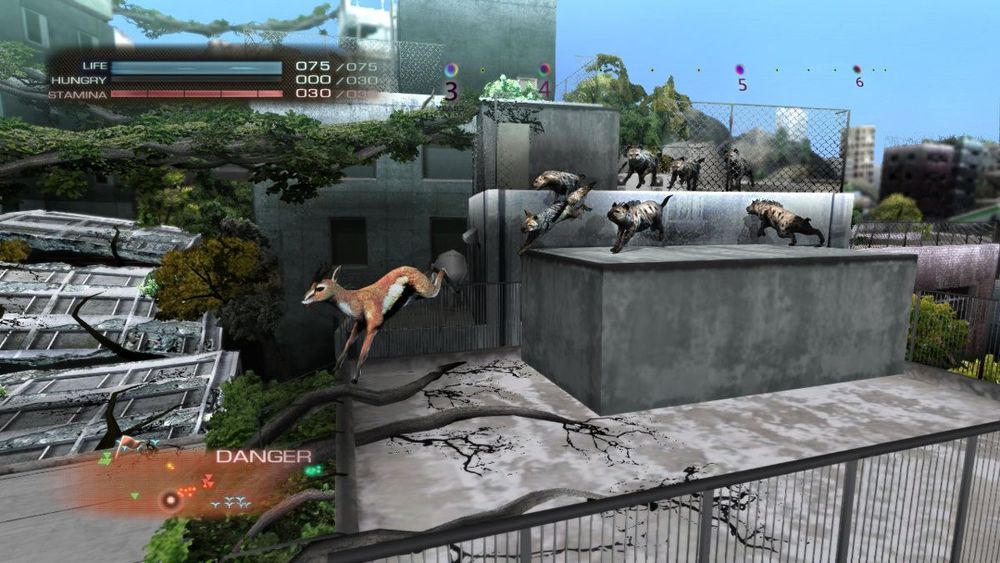
Although, as we said, it is not a visual section that dazzles, it does have a very appropriate artistic direction and knows how to introduce the player to the events. In addition, it gives rise to picturesque scenes in which the fluidity of the game is maintained even though we see animals and animals running from side to side in an aggressive manner. If we get into a bottleneck where a pride of lions chases us and we continue advancing to see how other animals join the party, the visual experience will be more than striking. It must also be said that the game is quite hard, not holding back when it comes to combat between animals, and that the sets, although short, have a notable depth.
Tokyo Jungle is a game that places its weight on the animals, so we can imagine that the sound load lies in the noises they emit. In this sense, work has been done to properly reflect the characteristic sounds of each of the animals, also highlighting a good selection of ambient effects. The soundtrack is not something that stands out in a special way.
To die and to be reborn to continue surviving
Tokyo Jungle was a unique game. It stands the test of time as a daring and original title, a type of production that should have more presence in the catalog of current consoles. It’s a shame that it never had a sequel.

